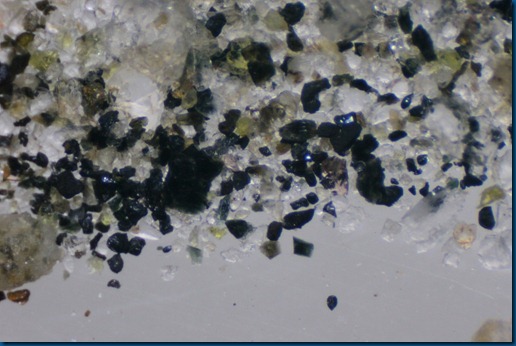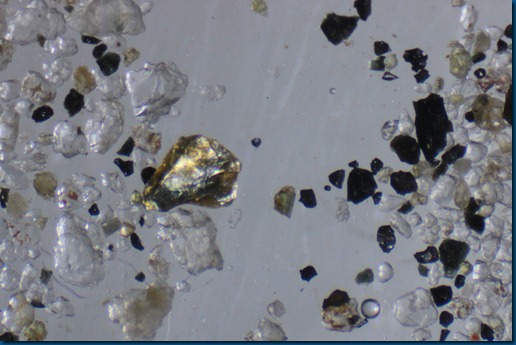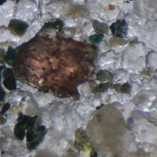Returning from Thermal City Gold mine yesterday and spending most of the day learning how to get rich from panning gold. The science behind of gold panning is based on the gold density. After stirring up the gold containing sand, the heavier gold will sink to the bottom while other materials will stay on the top. The process involved in continuous removal of lighter sand on the top and eventually the heavier gold will become more concentrated. I heard from staff there are plenty of microscopic gold in the sediment. I brought home a bag of sand from the last stage of panning which contains plenty of black sands (Magnetite) and hopefully some microscopic gold in there.
Figure 1 The remaining sand of the last step of gold panning process contains very high percentage of black sand. Many of the black sands are in fact Magnetite, an ferromagnetic mineral with chemical formula of Fe3O4. Some green colored crystals are olivine, an magnesium iron silicate with the formula of (Mg,Fe)2SiO4. I suspect the the pink colored crystals are rubies which are also found in the area. Of course, the majority of the colorless crystals are quartz which is the most common mineral in the sand.
Figure 2 WE FOUND GOLD!! These are the two pieces I found in my last pan. It would have been such a big disappointment without finding any gold during the field trip. The length of the gold is about 1mm. That’s the size that most of us found. Some of the folds do find some flakes about 3-4 mm.
Figure 3 A piece a mica in the sand. Lots of people mistake these as gold due to their metallic reflection. They can be easily distinguished from gold because they change the reflection when looked from different angle.









No comments:
Post a Comment